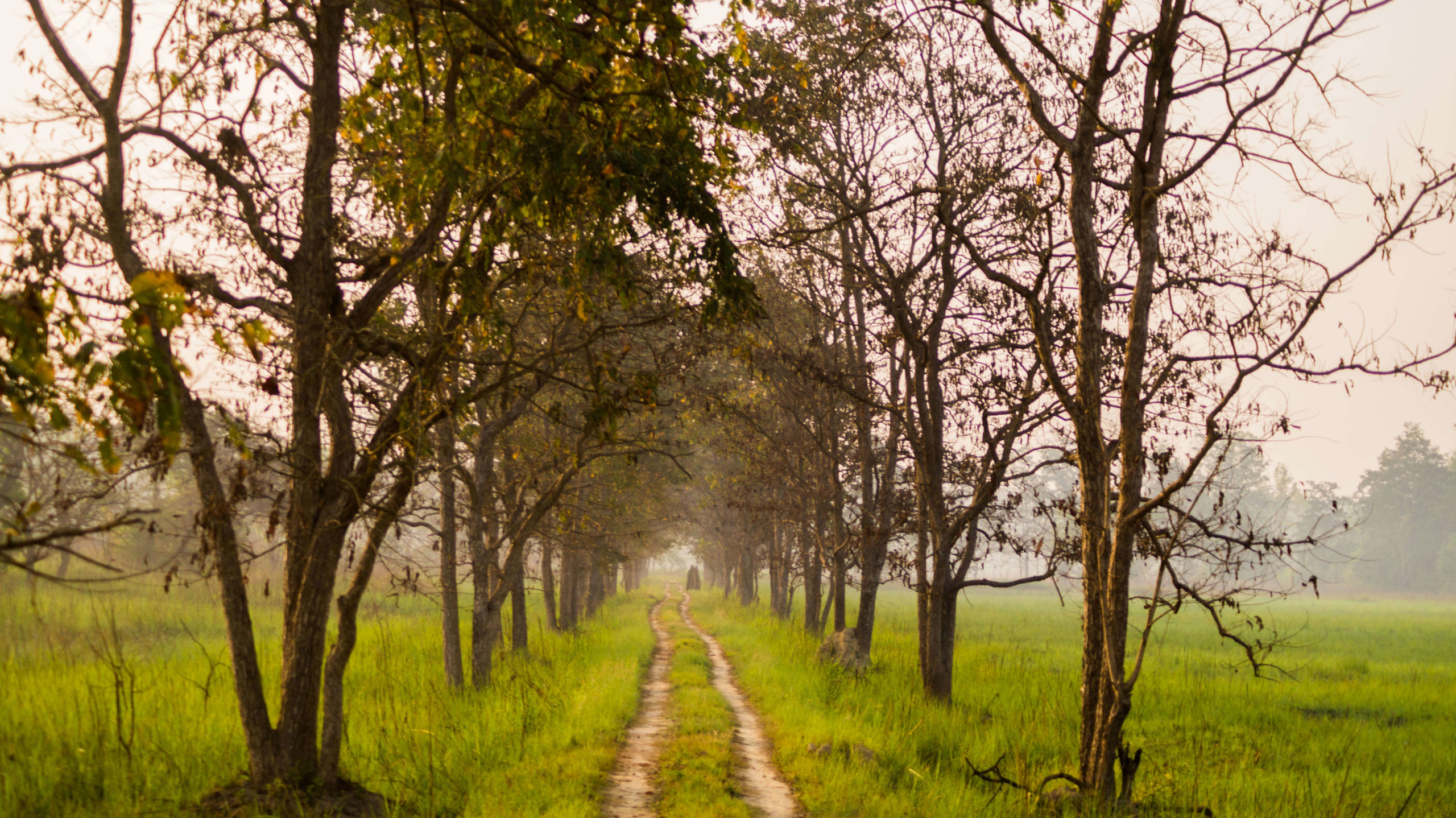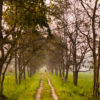The stars we encounter today are: Tharu tribals and the rhino rehabilitation project.
After breakfast, we are off on a long drive across the core forest to the northern most edge of Dudhwa Tiger Reserve. To reach the Indo-Nepal frontier demarcated by river Mohana, we have to walk past a gauchar or grazing ground. We are likely to see several, now virtually extinct, Himalayan griffon vultures soaring in the sky. Trudging further ahead, we pass by a patch of Sheesham forest which is home to numerous multi-colored butterflies.
Finally, having reached Mohana, you can wade through the crystal clear water to enter Nepal (even without a passport or visa). You can try to catch fish using Tharu techniques. While it’ll great to get some sort of booty, you are guaranteed to get lots of consolation prizes: algae, insects and tadpoles.
Here on a far-off border area, where all you see are hutments and security outposts when you are really exhausted and famished, we have a special meal arranged for you in the Tharu Village of Masankhamb. Tharus are an ethnic forest dwelling community who live in the Indo-Nepal Terai region. They have lived in hardy jungle conditions for a long time. They have their own distinct lifestyle, dialect, heritage, traditions, crafts, songs, dances and costumes. Tharus are an indispensable component of Dudhwa. As such, you haven’t really explored Dudhwa, if you have missed visiting Tharu villages
Post lunch, we drive down to Dudhwa range for the jeep safari. Dense Sal canopies can be seen in this range. It is so dense at some places that even sunlight does not reach the forest floor. You also crisscross the vast grassland at Sonaripur range where atop the watchtower at Banke Tal, you have a perfect vantage point to observe water birds, wild boars, swamp deer, elephants and occasionally a python sunning itself.
As we move on the edge of the river Suheli, our jungle journey becomes a roller-coaster ride. The riverine forest consisting of creepers-climbers-fig trees appears like a ghostly maze. Apart from tigers, sloth bear too inhabits this place. Crocodiles can be seen basking on the river bank, especially during winters.
Further ahead, we move parallel to the electrically fenced Rhino Rehabilitation Area. Rhinos, extinct in Dudhwa for almost a century, were relocated here from Nepal and Assam in the 1980s. They have a viable number now and are a star attraction of Dudhwa. If luck is in our favor, we might see a huge armored rhino munching leaves and grass near the fence itself. This is one of the most successful conservation projects in the world.
By the time you exit the forest and drive back to the camp, it is quite dark. And, tired and eager as you are to reach the camp and relax, the Karavan team is also awaiting your arrival to make you feel at home and hear your amazing experience.



